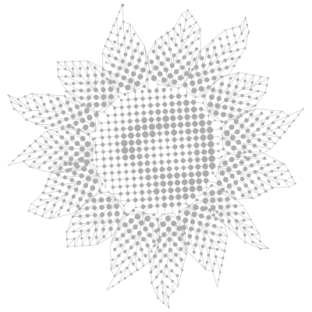Soil Health – The role of soil protozoa and nematodes
THE ROLE OF SOIL PROTESTABLE MICROORGANISMS AND NEMATOD
The simplest microorganisms
The simplest microorganisms are single-celled, which feed mainly on bacteria, other protozoa, soluble organic substances, and sometimes fungi. They are several times larger than bacteria in diameter (5-500 microns). Both protozoa and nematodes are aquatic microorganisms, that is, they are found in water films of soil and in the pores of soil aggregates filled with water.
The simplest are divided into three groups depending on their shape:
Mastigophora or flagellates – are the smallest protozoa (5-20 microns). They use four whip-like flagella for movement. Flagellates feed mainly on bacteria and are the most numerous of the simplest soils.
Ciliophora or ciliates – are the largest protozoa (10-80 microns) and the smallest. They move with the help of vibrating hair, like cilia. Ciliates use these thin cilia along their bodies like paddles to quickly move through the soil. They eat two other types of protozoa, as well as bacteria. Infusoria can consume more than ten thousand bacteria per day.
Sarcodina or amoeba – can also be quite large. They move using a temporary leg or “pseudopodia”. Amoebas are located in the rhizosphere and on the surface of the roots, where they can feed on populations of bacteria. There are two types of amoebas: conch and bare. Shell amoebas are enclosed in a hard chitinous shell (shell), while bare amoebas do not have this hard shell. Naked amoebae can change their shape, and the study of tiny pore spaces makes them valuable for processing nutrients in the soil.
The protozoa are found in abundance near the soil surface, in particular, in the upper 15 cm. The life cycle of many protozoa consists of the active phase (when they feed and multiply) and the resting phase. In the resting stage, many types of protozoa can withstand harsh environmental conditions and persist for many years until external conditions improve.
The role of the simplest
The simplest play an important role in the mineralization of nutrients that are available for plants and other soil organisms. The simplest (like nematodes) have a lower carbon to nitrogen ratio than the bacteria they feed on. Bacteria eaten by protozoa contain much more nitrogen than the protozoa needs, so they release excess nitrogen into the soil in the form of ammonium cations. This usually occurs near the root system of plants. Bacteria and other microorganisms quickly consume most of the ammonium, and some are used by plants.
Also, protozoa are involved in the regulation of bacteria and algae populations. So one of the representatives of the simplest (Paramecium) can consume more than 5 million bacteria in one day. These protozoa help maintain the ecological balance in the soil. The simplest are also an important source of food for other soil organisms, they help to suppress diseases, competing with pathogens, feeding on them. They can also affect bacterial populations in the rhizosphere.
The simplest need bacteria and algae for food and water to move, since it is moisture that plays a big role in determining which types of protozoa will be active. Like bacteria, protozoa are especially active in the rhizosphere near the roots. The amount of protozoa in the soil varies widely: from a thousand to a million in some very fertile soils. Mastigophora (flagellates) tend to dominate in drier soils, and Ciliophora (infusoria) are abundant with high soil moisture.
In soils with a predominance of bacteria, like cultivated soils, flagellates and amoebas predominate. Soils with a high clay content also contain more flagellated and bare amoebae, and soils with a larger sand fraction and know-til soils contain more large flagellated, shell amoebae and infusoria. The simplest and nematode compete with each other for their common food resource – bacteria. Some soils have either more nematodes or protozoa, but never both.
Nematodes
Nematodes or roundworms are non-segmented worms with conical ends. Their sizes: diameter – about 50 microns, length – 1 mm. They have a head and tail, they have a well-developed CNS, fertility system and digestive system, so they are considered the most primitive form of animals. Most often they are responsible for infectious diseases in plants and animals, but they also play an important role in the soil and crop ecology. Nematodes are aquatic organisms and therefore need moisture to move.
Several nematode species are responsible for plant diseases, but much less is known about nematodes that play a useful role. Many useful nematodes serve as biological pest control agents, others regulate natural ecosystems and nutrient recycling in the soil. Some nematodes feed on plants.
https://agrotest.com/wp-content/uploads/2018/05/22_item_file_maslov-03-2015-162-164_str_03_15.pdf
Write to us
and we will find an opportunity
for cooperation


